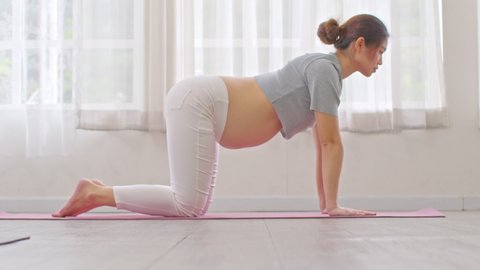
Prana mama! Benefits of Prenatal Yoga
A pregnancy yoga class can cultivate a sense of self love and compassion for the changes taking place on a daily basis. As with all yoga classes, by turning the awareness within, you’ll find the strength to root yourself in the present moment, the here and now. This provides an amazing toolkit for your birth experience with relaxation techniques, mental fortitude and lack of fear as you journey towards childbirth.
Childbirth is often described as ‘a miracle,’ yet it is also one of the most physically stressful events that can take place in a woman’s life.
And while we may know that yoga has its benefits in pregnancy; but can the practice of pranayama (breathwork) support the health of a mother during labour too?

Here’s 7 surprising ways breathwork can help prepare you to birth like a Goddess, even if you’re terrified of labour!
- Connecting with yogic methods of deep, mindful breathing help restrict the adrenaline produced by fear and pain.
- Elevates oxytocin needed to loosen and relax, meaning you’ll less likely require intervention or tear during birth.
- The physical practice of yoga builds strength and flexibility while the mindfulness aspect of yoga increases your ability to become in tune with your body and its responses to labour.
- Pranayama helps you manage contractions, it keeps oxygen flowing to you and baby and allows your body to soften, and not get lost or overwhelmed in a contraction.
- Increases your relaxation response, decreases your stress hormones and blood pressure and increases your oxygen levels. So by learning to control and maintain breath, you literally change everything else that is going on in your body.
- Fear and doubt in the birthing room can increase your pain and slow your labor. Effective pranayama techniques allow you to come to terms with and allow your feelings to flow.
- The real magic of yoga and pranayama is in the discovery of the limits and capabilities of your body. The greatest miracle on earth, giving birth

Yoga and pranayama can prepare your mind, body and spirit for birth AND motherhood. So if you’re expecting, give yourself that much-needed hour of tuning in and connect with your baby, with the bonus of a little self-care relaxation time. No previous yoga experience required!
At Bodytree, our expert instructors provide all the physical tools you need to cope with any prenatal ailments, maintaining strength and daily movement, and classes are safe for all trimesters.
Can’t make it to a class? Here’s our top 5 yoga postures for during and after pregnancy.
5 best yoga postures in pregnancy

Cat-cow pose: Sanskrit: Marjaryasana-Bitilasana
If you’re experiencing back pain, you’ll want to rock between these two poses. This basic set of movements stretches the spine and allows your belly to hang, which can ease tension. It can also help move the baby into optimal position for birth. These poses will help you during labor if you experience “back labour.”

Goddess pose: Sanskrit: Utkata Konasana
A wide-legged squat can be done with or without the support of a wall for balance. This pose strengthens the legs and pelvic floor, and encourages hip opening—all key components of the birth process!

Balancing table pose: Sanskrit – Dandayamna Bharmanasana
This pose requires core strength to maintain balance, so it’s good for working those abdominal muscles, which will be important during labor! You might also find relief from round ligament pain if practiced regularly. Balance on your hands and knees and alternate lifting your right arm and left leg (then left arm and right leg) for a few seconds on each side.

Downward Facing Dog: Sanskrit: Adho Mukha Shvanasana
This variation of downward dog is excellent to help ease upper back and shoulder tension as well as open up the sacrum and lower back. Using a wall keeps your head elevated, too, which is recommended if you experience heartburn. To modify, place your hands on a wall instead of the floor.

Wide knee child’s pose: Sanskrit: Balasana
If you’ve done yoga before, you already know the power of this restorative pose. As you get bigger, because your belly is so heavy, anything that takes the pressure off of it is going to feel amazing. To perform, kneel on the floor with your toes together and your knees wide apart. On an exhale, lower your torso between your knees. Extend your arms alongside your torso with your palms facing down. Rest here as long as needed.




No Comments